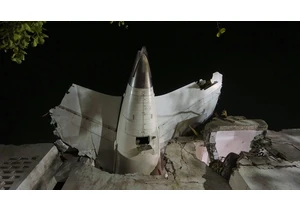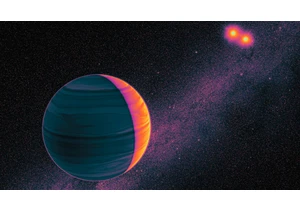In May of 1995, the video game industry hosted its first major trade show. Electronic Entertainment Expo (E3) was designed to shine a spotlight on games, and every major player wanted to stand in it.
Sega believed it had figured out how to command that spotlight. Riding high on the success of the Sega Genesis, the company unveiled the Sega Saturn at its press conference. After a quirky segment that resembled one of Sega’s off-the-wall commercials, Tom Kalinske, CEO of Sega of America, delivered a bombshell announcement.
“Since I began my remarks with an announcement, I might as well finish with another: We started our rollout of the Sega Saturn yesterday,” he said. “We’re at retail today in 1,800 Toys “R” Us, Software Etc., and Electronics Boutique stores around the U.S. and Canada.”
Sega hoped it would be a mic drop moment. Instead, it marked the beginning of the end for the company’s hardware business.
What the press conference audience didn’t know was that Kalinske had strongly opposed the early launch. He had argued fiercely with Sega’s Japanese leadership, pointing to his past success with the Genesis in the U.S. and warning that a surprise launch without a proper marketing ramp-up wouldn’t work. But his objections were overruled.
This story is part of 1995 Week, where we’ll revisit some of the most interesting, unexpected, and confounding developments in tech 30 years ago.
“[I] didn’t understand why this was occurring,” he told TimeExtension in 2022. “I was forced to introduce it. We didn’t have enough hardware. We didn’t have enough software. And then, to make matters worse, we were forced to introduce it five months earlier than we wanted.”
Sega’s announcement turned heads—but they quickly turned again when Sony held its own press conference later that day. After showcasing the PlayStation and a long list of development partners, Olaf Olafsson, head of Sony America, invited Steve Race (formerly Sega’s own marketing chief) to the stage.
Race approached the podium, put down his notes, and ">simply said: “299,” then walked away. That one number undercut the Saturn and every other console on the market by $100.
By the time Sega abandoned the Saturn just three years later, it had sold fewer than 2 million units in the U.S. The company would release one final system—the Dreamcast—in 1998 in Japan and 1999 in the U.S. But the Saturn’s mishandled launch had already altered Sega’s trajectory forever.
A Doomed Launch
“The Saturn was dead before it came out because of the poor decision-making Sega had made,” says Chris Kohler, a video game historian and editorial director at Digital Eclipse Entertainment Partners. “When it came out in Japan, Sega was also launching 32X, an add-on for the Sega Genesis. . . . All it ended up doing was completely confusing consumers. They had no idea what to buy.”
Despite that confusion, the Saturn had a decent launch in Japan. Its game lineup appealed to local tastes, especially with a home version of Virtua Fighter, a massive arcade hit. But American gamers were harder to win over. While titles like Panzer Dragoon and Clockwork Knight have dedicated fanbases today, they weren’t enough to justify a $399 console (about $842 in today’s dollars).
“I tried and tried to get the launch pushed back so that we had some actual software to support it,” Kalinske told TimeExtension. “I was not successful. I had four glorious years where Sega Japan pretty much let me do whatever I felt was right, and then that stopped.”
One of the Saturn’s most glaring missteps was the lack of a Sonic the Hedgehog game—not just at launch, but throughout its entire lifespan.
At the time, Sonic was at the height of his popularity. Sonic the Hedgehog 3 had sold 4 million copies the year prior. He also starred in a Saturday morning cartoon and the CGI-animated series Sonic Boom on Cartoon Network. Launching a Sega console without Sonic was like launching a Nintendo console without Mario.
The surprise launch strategy also backfired on Sega in another way.
“Essentially, they kneecapped themselves,” says Kohler. “They can only ship it to certain retailers, so the retailers that don’t get those early shipments get burned and they don’t want to stock Sega products anymore. . . . Consumers didn’t have the ability to get excited or put down preorders. It hit the market without any buildup.”
An Unexpected Fight
Sega knew Sony would bring the PlayStation to the U.S., but didn’t initially view it as a serious threat.
By the mid-1990s, lots of big, non-gaming focused companies had tried to step into the videogame world. Magnavox had released several versions of the Odyssey in the 1970s. Philips had released the CD-i a few years prior to the Saturn’s introduction. The Neo Geo was already on the market and the TurboGrafx-16 had just been discontinued.
But Sony was different. Aggressive and well-prepared, its $299 price point stunned the industry.
“We didn’t know they were going to do it, and when they did, we were like: ‘We are screwed here,'” said Kalinske. “We weren’t making money at $399, so we had a problem.”
Consumers responded immediately. Retailers increased orders, and developers rushed to work with the PlayStation.
“All of these big hardware makers were coming into the video game industry and falling on their face,” says Kohler. “Sony, of all of them, comes in and is not only successful but outrageously successful.”
Executive Departures
Kalinske’s frustrations continued after the Saturn launch, and in July of the following year, he resigned—though he remained on the board. Bernard Stolar, who had been instrumental in launching the PlayStation, took over at Sega.
His first move was to abandon the Saturn.
“When I got to Sega I immediately said, ‘We have to kill Saturn. We have to stop Saturn and start building the new technology.’ That’s what I did. I brought in a new team of people and cleaned house. . . . I took the company down to 90 employees to start rebuilding,” Stolar, who died in 2022, once told GamesBeat.
That team created the Dreamcast, which performed well in the U.S. but not well enough to restore Sega’s dominance—especially as Microsoft prepared to enter the market. Lacking the resources to compete with Sony, Microsoft, and Nintendo, Sega exited the hardware business.
Today, Sega is part of Sammy Corp. and focuses solely on software, with franchises ranging from Angry Birds to Total War—and of course, Sonic, who now stars in a successful film series.
Still, it’s hard not to ask, “What if?”
What if Sega had waited until September to launch the Saturn, as originally planned? What if it had a stronger launch lineup for the U.S. market?
There are no answers, only the reality that the Saturn’s missteps reshaped the industry.
“In a lot of ways, it was Sega’s to lose and they just fumbled it,” says Kohler.
Melden Sie sich an, um einen Kommentar hinzuzufügen
Andere Beiträge in dieser Gruppe

A preliminary finding into last month’s Air India

Robinhood cofounder and CEO Vlad Tenev channeled Hollywood glamour last month in Cannes at an extravagantly produced event unveiling of the trading platform’s newest products, including a tokenize

In the mid-1990s, Hollywood began trying to envision the internet (sometimes called the “information superhighway”) and its implications for life and culture. Some of its attempts have aged better

Ever since AI chatbots arrived, it feels as if the media has been on the losing end o

Aside from the obvious, one of the best parts of the work-from-home revolution is being able to outfit your workspace as you see fit.
And if you spend your days squinting at a tiny lapto

Child psychologists tell us that around the age of five or six, children begin to seriously contemplate the world around them. It’s a glorious moment every parent recognizes—when young minds start

During January’s unprecedented wildfires in Los Angeles, Watch Duty—a digital platform providing real-time fire data—became the go-to app for tracking the unfolding disaster and is credit
